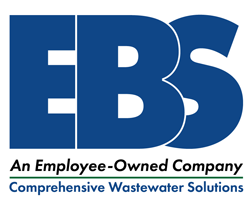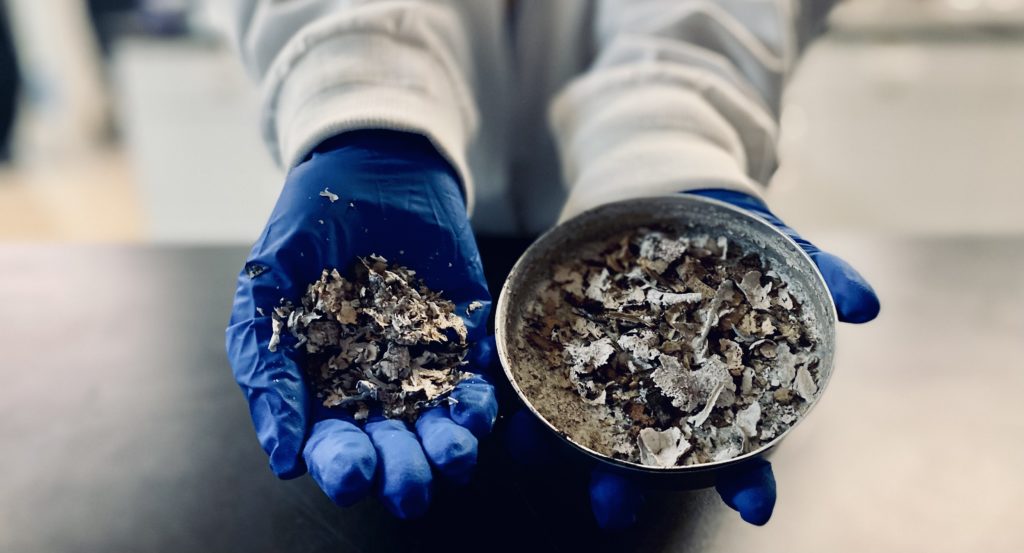Executive Summary
Environmental Business Specialists, LLC (EBS) was contracted by a US pulp and paper mill to conduct a 40-Day bench-scale study of Volatile Solids Reduction based on the Environmental Protection Agency (EPA) part 503 biosolids rule. The goal of this study was to evaluate the volatile solids reduction over a period of 40 days, which is required for their permit renewal. If the sludge reduction is less than 17%, the sludge is considered stable and non-attractive to vectors. Half of the flasks were analyzed on day 20 to determine if the reduction is within acceptable parameters and whether the study should be completed. Any completed 40-day solids reduction testing must be reported by the facility even if volatile sludge reduction was higher than 17%. The key findings of this study are:
- The volatile solids were reduced by an average of 7.94% during the 40-day period. This is below the 17% goal and is considered a success according to the EPA part 503 biosolids rule guidelines.
Methods
An initial sample of sludge cake was received by EBS, which underwent testing for total and volatile solids. The study was then set up according to the protocol made by the client based on part 503 biosolids rule.
Flask set-up:
- Weigh and record flask weight
- Tare flask
- Add 15 g of sludge cake. Record weight. (Sludge weight)
Each of the 10 Erlenmeyer flasks was sealed with a stopper, and fitted with a gas relief valve to allow generated gas to escape but prevent air from entering the flask. The end of the rubber tubing was placed under the water to prevent air from getting into the flask. The 10 flasks were incubated at 30-37°C in a water bath. The temperature was measured and recorded twice per day. Each flask was mixed daily to ensure the samples were homogenous. Five flasks were taken off on day 20 and analyzed for total and volatile solids to determine if the volatile solids reduction was within acceptable parameters. These data were used to give an early indication of volatile solids reduction to determine if the study would be continued until day 40. On day 40, the remaining five flasks were analyzed for total solids and volatile solids. Using initial and 40-day volatile solids data, the percent volatile solids reduction was calculated for the study. Mean values were used from each of the results obtained for the initial and 40-day data and the Van Kleeck equation was used to determine the volatile solids reduction.
Van Kleeck Equation:

VS in = initial average volatile solids (g)
VS out = volatile solids of flasks # (1-10) (g)
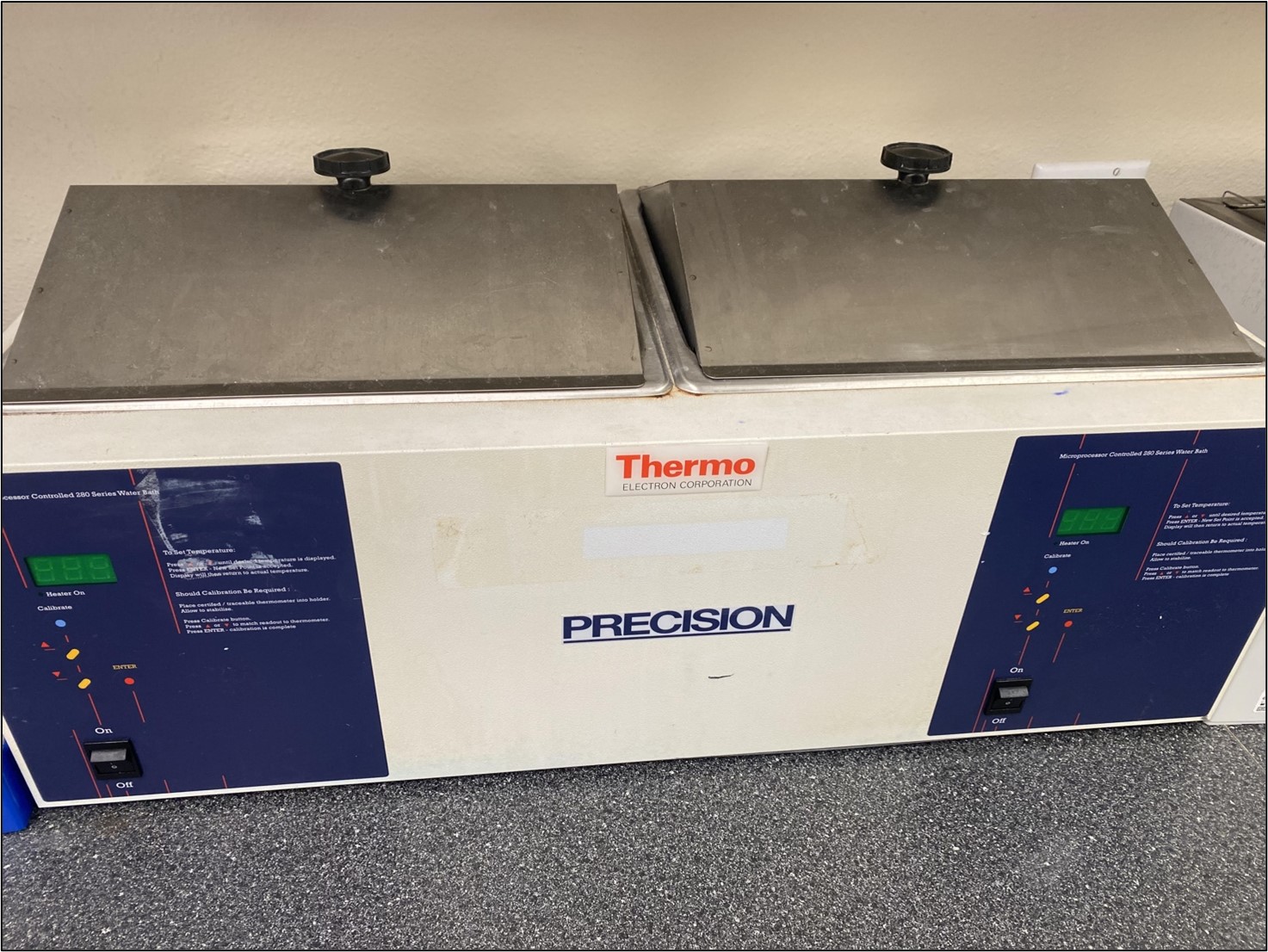
Figure 1 – Thermo Precision water bath used to keep a constant temperature for the sludge
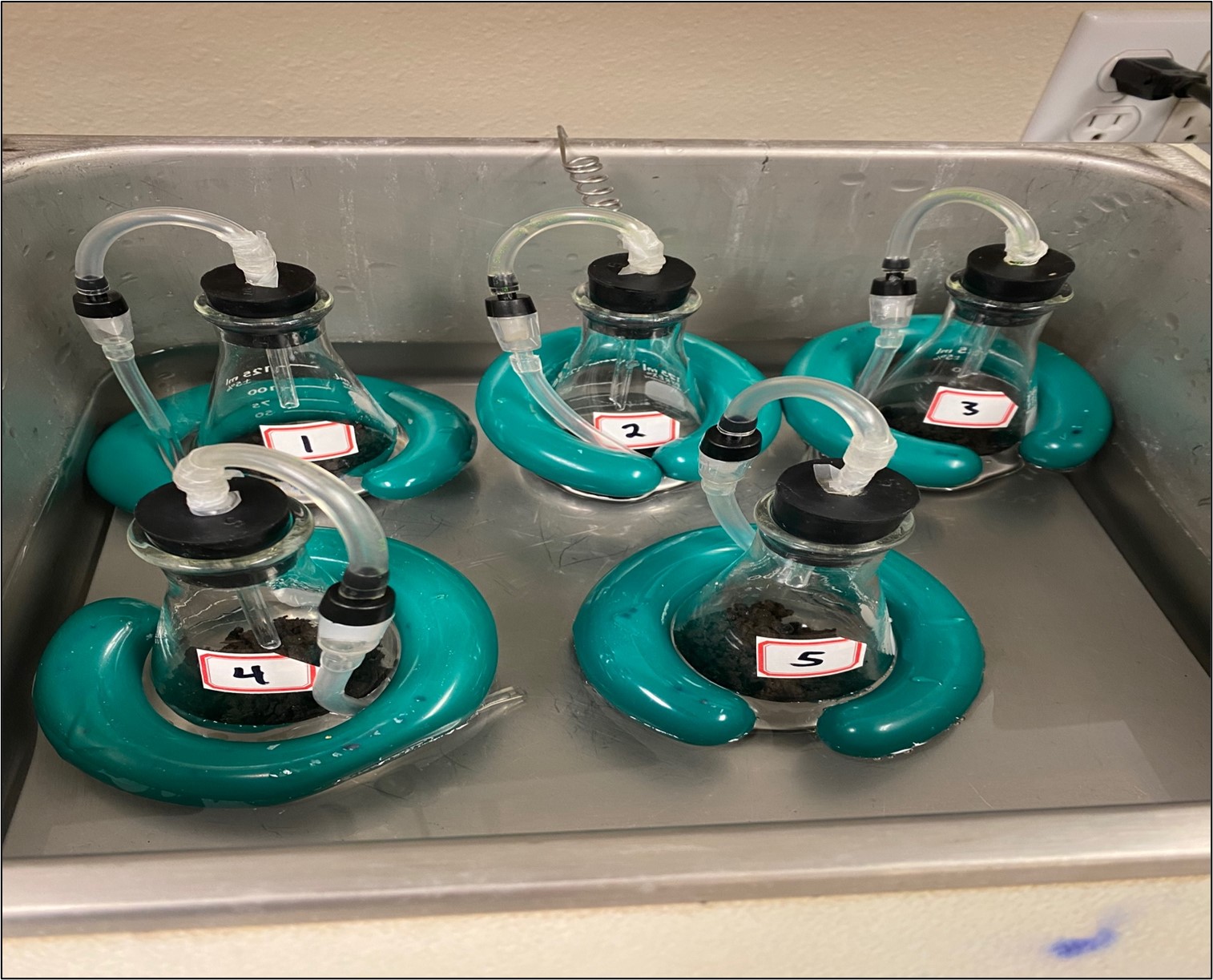
Figure 2 – Flask setup during the study
Results and Discussion
Initial volatile solids data can be found in Table 1. The volatile solids data for the 20-day and 40-day testing can be found in Table 2 and Table 3. The 20-day data showed an average volatile solids reduction of 5.38% and the 40-day results showed an average reduction of 7.94%. The final 40-day volatile solids reduction was within the stated parameter of <17% from the client.
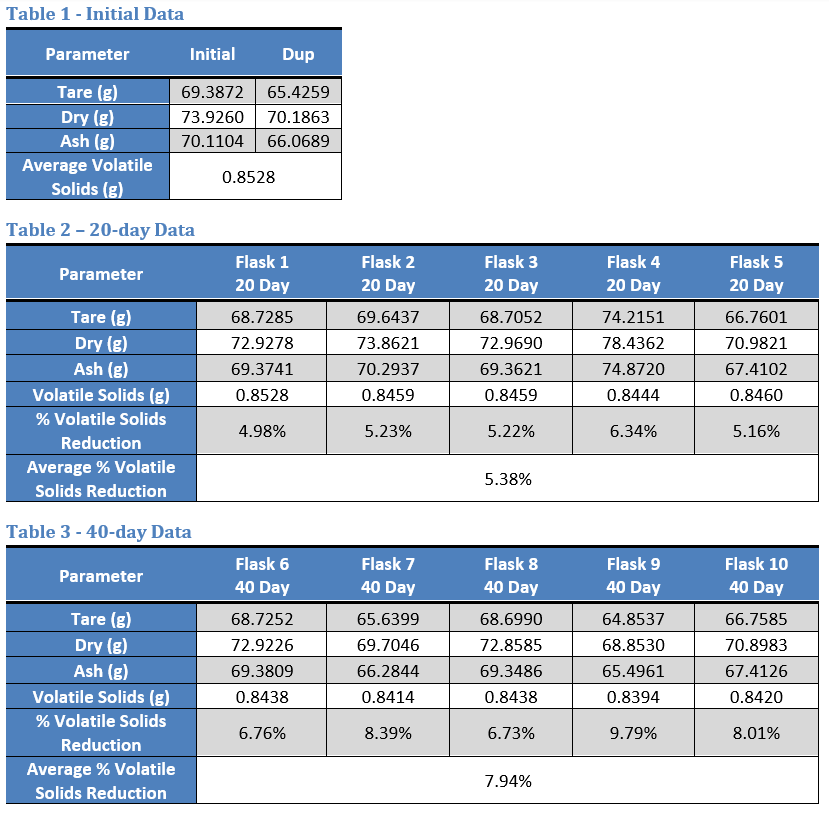
Conclusion
Over the course of 40 days, the sludge reached an average volatile solids reduction of 7.94%, which is within the parameter of < 17% provided by the papermill and EPA. Because the volatile portion of the sludge was reduced by only 7.94%, it is considered stable and non-attractive to vectors.
With results from studies such as this, our clients can make well-informed decisions when facing permit renewal or operational changes in their WWTP. EBS has extensive experience in supporting a wide variety of bench-scale testing to suit our client’s needs. Our goal as a company is to help our clients meet strict permit requirements while sustaining healthy wastewater treatment systems. Please contact us for any of your wastewater needs.
